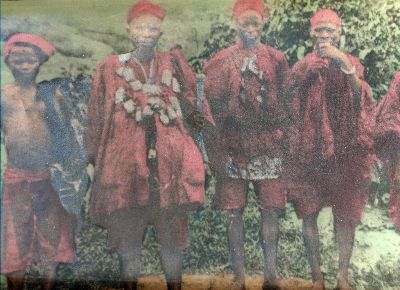By Toba Adedeji
The Kiriji war in Osun-State has left an impulse of prominence to the Yoruba people and had been rated by historian as the world longest civil war by an ethnic group which lasted for 16 years. Hitherto the war has left an imprint of tourist and monumental to the boundary of Imesi-Ile and Igbajo community being the place where the battle took place.
According to history, the epic war took place as a result of the vision Ibadan empire was set to run with then, in which she wanted to enlarge its reach of influence as protector of the Yoruba nation. So the vision called for representatives called Ajele to protect the interest of Ibadan in barely all Yoruba land to rule the conquered territories on behalf of Ibadan.
It was recorded that the Ibadan representatives (Ajele) was drunk and intoxicated with power which transform them to despot thereby collecting exorbitant tribute and ridiculous homage from the community.
History had it that the Ajeles waxes strong in defiancing peoples plea of mercy and consideration which made an Ajele (Name Unknown) had sexual intercourse with the wife of Fabunmi a native of Oke-Imesi.
When he(Fabunmi) heard about it he reacted with a sense of bravado by beheading the Ajele and sent the head of the obstinate Ajele to Ibadan monarch.
Having done this Fabunmi knows the consequence of his act, knowing it will lead to wall; he started consulting some Yoruba land for the support especially his mother land who did not like the system of Ajele. This very courageous step took by Fabunmi gives a number of Yoruba land monomaniacal colingering against the treat. In a very short span another fragment emerge admist the Youruba to form a colony called Ekiti Parapo lead by an irrepressible warrior called Ogendengbe of Ijesa land to stop the terrain of the Ibadan vision.
Ibadan Monarch was not pleased with rebel cause by Fabunmi causing a fragment within the Yoruba empire caused them to raised a worrior called Latosa to fight the course and protect the sanctity of the empire.
This breach cause the Ibadan to camp to the border of Igbajo and also the Ekiti Parapo camp at Imesi-Ile border for the war.
The war gained its name from the sophisticated gun used at the war front that sound K-I-R-I-J-I, which has named the battle itself out of many wars that took place by an ethnic group throughout the whole world.
In a tour observed by osun.life correspondent to the kiriji war site, the site was made up of many historical places which is a testament of the war; in the likes of : Ogedengbe Stone seat and Stool, Ogun shrine of Ogendengbe, Fejeboju stream, Ibu Latoosa, Treaty peace site, Faragbota tree and Aabaa Latoosa( village of Latoosa).
Ogedengbe stone seat and stool was the commanding tower for the army of Ekiti Parapo and they wait steadfastly for the mystical command and communication from their commander from his stool which is about 700meters to the war site.
Another monument place at the site was the Ogun shrine where Ogendengbe consult the gods on how the war will look like and it is the enquiry portal.
Fejeboju stream was formally called Eleriko which supplied water to both the Ibadan and Ekiti parapo confederate camps. But during the war the victims from Ekiti parapo camp washed their face of blood, getting back to their camp, people saw blood splashes on their faces thereby Eleriko becomes Fejeboju because of the much blood flowed into it from the casualties during the war.
The ancient landmark where peace was restore to the ethnics war was the Peace Treaty center which is situated between the two communities ( Igbajo and Imesi-ile).
The arena was the site all stakeholders of the war converged to end the war.
On September 23rd, 1886,Acting Col. Secretary, Henry Higgins and Queens Advocate Special and Commissioner Clerk in Holy Order, Mr. Oliver Smith was present at the site where they all stakeholder stood on stone to signed peace treaty.
The twelve articles were signed and inserted into a bottle and buried in the hole of about six feet.
This twelve articles on the agreement are conspicuously inscribed as plagues on a monolith that is still at the site till date. And it has also been a place that attract tourist both within and outside the country to visit.
Social Media Links
Facebook – www.facebook.com/osundotlife
Instagram – www.instagram.com/osundotlife
Twitter – www.twitter/osundotlife
Kindly share this story | All rights reserved. This material, and other digital content on this website, may not be reproduced, published, broadcast, rewritten or redistributed in whole or in part without prior express written permission from OSUNDOTLIFE.
Contact: editor@osun.life
WhatsApp: 📲 +2348092333666

